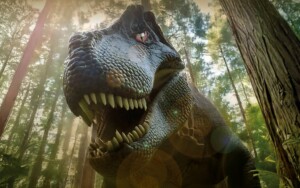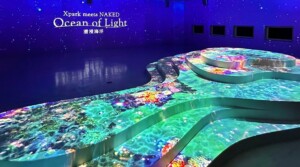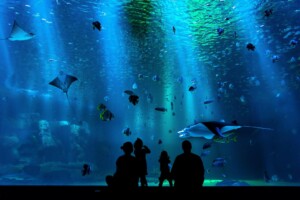Increasingly Zoo and Aquarium guests want to see, "behind the scenes", to see not just what the animals look like but how the facility operates and tends for their often complex dietary, medical and behavioural needs.
With Zoos and Aquariums themselves also wanting to educate guests and showcase their vital conservation work this is resulting in a "near-expected new form of engagement".
By John Kemper, VP, PGAV Destinations.
In 1939, a spunky little Cairn Terrier pulled back a shimmering emerald curtain to reveal a nervous Frank Morgan shouting, “pay no attention to the man behind the curtain!” What Dorothy, the Scarecrow, Tin Man, and the Cowardly Lion learned in the following minutes, besides the fact that they had courage, brains, and heart all along, was that the story of the real man behind the curtain, not the Wizard, was even more compelling than the magician they had come to know him as.
For nearly 140 years, America’s zoos and aquariums have been educating the public about the faunal wonders of our natural world, from the narwhals of Greenland’s seas to the bandicoots of Eastern Australia. Traditionally this has taken the expected form of a built habitat in which live animals roam and explore; and on the other side of the glass, fencing, or trench, signs explain the animals’ natural habitat, behaviors, and challenges.
But in more recent years, “the public’s chief interests have melded perfectly with the top messaging priorities of zoos and aquariums, and have created a near-expected new form of engagement for guests, ” says Emily Howard (below right), vice president at PGAV Destinations. Just as Dorothy and her gang of misfits had insatiable curiosity about the man behind the curtain,  destination guests want to see how zoos operate – how the animals they love are taken care of and what happens behind-the-scenes.
destination guests want to see how zoos operate – how the animals they love are taken care of and what happens behind-the-scenes.
Complementarily, zoos and aquariums want to deliver that very same message – to transparently show the public what incredible stewards they are of amazing animals, whether on zoo property or abroad in the animals’ endangered habitats.
Behind-the-Scenes Tours
The first step in bringing the back-of-house to the guests is actually physically bringing the guests into the back-of-house. This method is often the least capital-intensive way to introduce these programs, specifically for already-established institutions and exhibits without renovation budgets.
Georgia Aquarium in Atlanta stands as a shining example, offering a variety of world-class behind-the-scenes tours for guests. Animal care staff take guests above a collection of different exhibits, including Tropical Diver, a live coral reef habitat, and Ocean Voyager, the largest ocean exhibit in North America (which is also home to the world’s largest species of fish, the whale shark). On these different tours, ranging in capacity and time, guests get to see first-hand how the animals are cared for, how the state-of-the-art life support systems work, and how smaller species are bred and nurtured. These also offer opportunities to meet resident biologists and view the commissary and veterinary clinic.
Georgia Aquarium offers even more exclusive behind-the-scenes tours, beyond these daily offerings. In the Cold Water Quest Gallery, renovated in 2010, guests can participate in a Sea Otter Encounter (above). After a tour of the facility and a presentation by one of the aquarium’s biologists, tour-goers get to help prepare a sea otter meal and participate in a training session with the charismatic marine mammals – all while actively learning about the Aquarium’s rescue, research, and conservation efforts.
Designing Exhibits around Back-of-House
The next evolution of this trend begins at the design phase of new habitats – where the latest exhibits are actually designed around the concept of exemplifying zoos and aquariums operations and efforts. Says Howard, “it goes far beyond designing the animals’ habitats and what the immersive, educational component of the exhibit will look like for guests – the back-of-house actually becomes the feature of the exhibit.” And in some instances, even small exhibits are including training panels where guests can watch keepers interacting with the animals in ways that would typically occur behind-the-scenes.
Glacier Run (above), having opened at the Louisville Zoo in 2012, is an exemplary case study of this trend. In fact, the new exhibit was so successful that it was awarded the Association of Zoos and Aquariums’ top honor in Exhibit Design Excellence the year it opened.
The exhibit is an immersive habitat at the Louisville Zoo which recreates a Churchill, Alaska-like outpost on the fringe of the arctic wilderness. The experience features polar bears, seals, sea lions, and a rescued grizzly bear family, all in a dynamic mixture of natural habitats and a themed, mining town setting. Throughout the entire exhibit are a variety of experiences that provide face-to-face encounters with keepers and animals alike, all teaching about the Zoo’s husbandry and conservation efforts.

Under-construction Heart of Africa at the Columbus Zoo and Aquarium in Ohio (above) has been designed with the same principles. The exhibit, opening this May, will introduce a variety of new species, including gazelles, impalas, cheetahs, zebras, monkeys, ostriches, and a pride of lions, all in exhibits that thoroughly educate about the Zoo’s abundant conservation efforts in Africa and how this nationally-recognized destination cares for these great animals.
Lastly, the South Carolina Aquarium recently announced the development of its new Sea Turtle Rescue Center. For years the South Carolina Aquarium has run one of the country’s most successful and active sea turtle rescue programs (below). In partnership with the South Carolina Department of Natural Resources, sick or injured sea turtles are brought to the Aquarium where they are rehabilitated for an average of eight months and then returned to the wild. The addition will bring the Aquarium’s recovering turtles – including loggerhead, green, and Kemp’s ridley turtles – into the public eye and teach about the efforts of the SC Aquarium.

Existing Solely to Showcase Conservation
A handful of institutions around the world exist for the sheer purpose of teaching about conservation efforts and how their institutions operate. One such destination is the Cheetah Conservation Fund’s International Research and Education Centre (CCF) located near Otjiwarongo, Namibia. The Centre is located near the world’s largest population of cheetahs; and beyond conducting a wealth of research, the organization delivers numerous educational programs for local villagers, ranchers, and school children regarding the conservation of the incredible cats. Most uniquely, the CCF actually breeds herding dogs to scare off big cats from farmers’ lands, reducing the need for farmers to hunt them to protect their livestock.
At this time, showcasing a zoo or aquarium’s back-of-house operations and conservation efforts has gone far beyond a unique, premium experience – it’s virtually expected by the guest. “And this should not be a trend that scares these institutions, ” says Howard, “ it should be celebrated, as visitors’ curiosities give zoos and aquariums a tremendous opportunity to showcase and celebrate the brilliant experts and programs that support these treasured animals.”
These days, it’s not about the smoke, lightning, and blasts the Wizard fabricates from behind the curtain – there’s simply no need for the curtain at all.
















